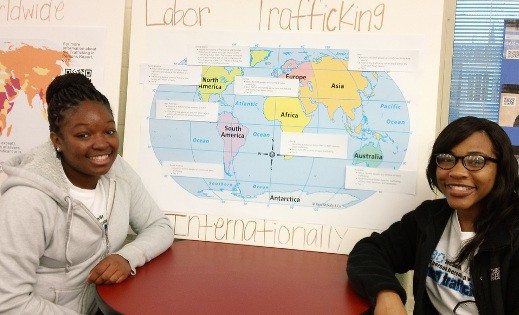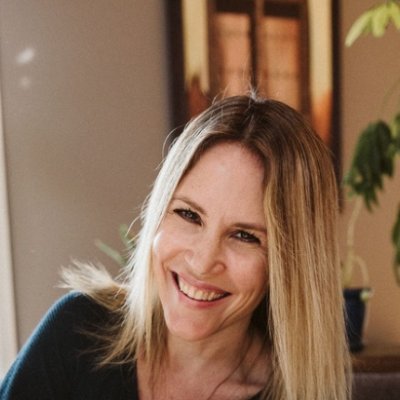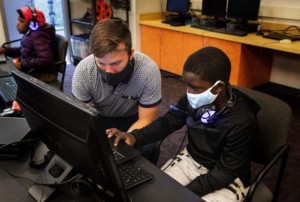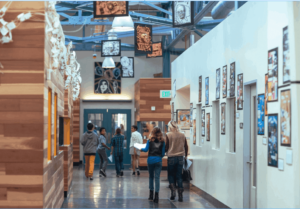How Project-Based Learning Fosters Community Change

Solving real world issues that matter is important to us as adults–and it’s important to our students. When we bring real world issues to the classroom and allow students to lead, we can foster community change. One school in South Carolina is doing this by tackling a daunting and important subject: human trafficking.
Westwood High School is in its third year working on a project called Globalize 13. Globalize 13 is a service-learning project for secondary schools that presents lessons about slavery within the context of the 13th Amendment, the amendment that abolished slavery 150 years ago.
How does project-based learning foster community change?
What started with a dialogue around slavery and reading the texts of Frederick Douglass resulted in students recognizing and doing something about modern day slavery in their own community. The students now call themselves Modern Day Abolitionists. As a result of the project, students have started a Facebook page and a Twitter account (@WHS_MDA) to document and share the work of their campaign to create awareness of human trafficking.
Ken Morris, President of Frederick Douglass Family Initiatives, and direct descendant of both Frederick Douglass and Booker T. Washington, visited the school to launch Globalize 13 and support students’ efforts to raise awareness of human trafficking in South Carolina. At the event, a Richland County councilman attended and was so inspired by the students’ projects that he started a task force to investigate human trafficking and has invited students and teacher Stacey Plotner to be members of that task force.
One of the student projects from Ms. Plotner’s English class won honorable mention in the White House Student film festival. (Warning: This video is short and moving. If you have kids, know kids or love kids, you may be moved to act).
Two students also planned a session for other students from around the country who were acting as modern day abolitionists at the “Historians Against Slavery” conference located at Underground Railroad Freedom Center in Cincinnati.
We recently had a chance to talk to the lead teacher on the project, Stacey Plotner, about the project. As a teacher in her 19th year, Ms. Plotner said:
Students have to see that their work is doing something. I have taught the narrative of Frederick Douglass for years. It’s so important for the work in the classroom to connect to a real problem today. What started out as a student project has inspired me as a teacher. And the students see that they can really create change.
To begin this project, we had to actually create a campaign. Students had to research and figure out what a campaign is and how to actually launch a campaign. None of us had done this before, so it was kind of chaotic at times.
I am a big advocate of a mix of more traditional teaching and also project-based learning, allowing students to solve real world problems. For teachers, it’s all about how to combine the two which is the true formula for success. A real world problem creates a real deadline. The students know they have to get their work done because there is an authentic audience.
Westwood High School is in Richland School District Two, which has a strategic partnership with Buck Institute for Education (BIE), a nonprofit organization dedicated to advancing project-based learning. BIE coaches have led project-based learning workshops for teachers and also meet individually with teachers on project-based learning best practices. BIE provides systemic PBL implementation services to more than 25 U.S. school districts, supporting more than 10,000 teachers and leaders nationwide. With this three-year partnership, BIE not only supports teachers with professional development but also focuses on the leadership and organizational development needed to sustain system-wide Gold Standard PBL implementation. Deeper learning environments such as these help students think critically, solve real world problems, work collaboratively, master academic content and hone and develop academic mindsets that support college and career readiness. (See this in action in the film Most Likely to Succeed).
If you are a teacher thinking about implementing project-based learning in the classroom or ways to do it even more effectively, Ms. Plotner suggests allowing students to tackle social issues that they really care about:
If we want to teach students to write persuasively, why not have them persuade about something in the real world?
You can pick labor rights, whatever modern day problem exists, and you can do this in history class, you can use your curriculum you already have, and you can tie in real world issues and let the kids use the skills they are learning.
For more specific information on the Globalize 13 curriculum, see this page on the Frederick Douglass Family Initiatives.
For more on project-based learning see,
- 17 Teacher Tech Tools for High Quality Project-Based Learning
- 9 Resolutions & 9 Resources for Your PBL Classroom This Year
- Must Know Buck Institute Project-Based Learning Resources
Stay in-the-know with all things EdTech and innovations in learning by signing up to receive the weekly Smart Update. This post includes mentions of a Getting Smart partner. For a full list of partners, affiliate organizations and all other disclosures please see our Partner page.





0 Comments
Leave a Comment
Your email address will not be published. All fields are required.